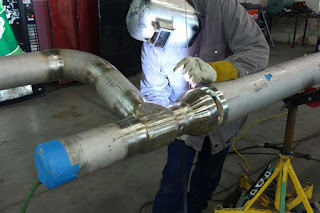Pipe Fabrication is an industry that can be considered one of the oldest and one of the most profitable. The energy industry includes all companies engaged in the manufacturing and production of energy, as well as those involved in the processes of fuel production, refining, distillation, transportation, and distribution. The manufacturing of pipeline systems and other related piping has been made a much more efficient and effective process since the advent of better and more modern tools, techniques, and materials that allow for the creation and maintenance of the different piping systems.
The large pipe fabrication businesses have seen a steady increase in sales over the past five years, with even faster growth in their number of employees. The fact is that these jobs require more than just basic skills and knowledge; they also require the proper skills and knowledge in order to do the job efficiently and safely. This is especially important in pipelines that cross rivers and oceans. A company that fails to take precautions before installing or repairing pipes may find themselves in some very embarrassing situations.

There are many factors that affect the success of large pipe fabrication, ranging from technological advances to the availability of the needed materials. There are also numerous methods that are used in order to properly fabricate the different types of piping systems used by companies throughout the world.
Pipe fabrication requires a great deal of knowledge, training, and experience. It can take years for a company to train an employee who will become an expert in a particular field of pipe fabrication. There are many classes offered by schools, colleges, universities, vocational programs, and other training institutions, such as the Petroleum Equipment Institute. These courses are designed to help students gain the necessary knowledge and skills necessary to perform the many complex tasks that are involved in pipe fabrication, including the use of specialized equipment and techniques.
The cost of pipe fabrication can be very expensive, especially if the fabrication is done on an industrial scale. The larger and more complex the fabrication needs to be, the greater the cost is likely to be.
Many pipe fabrication companies also offer classes on their website for prospective students interested in pursuing a career in pipe fabrication. The cost of such classes is generally cheaper than that of going to school for a four-year university degree in pipe fabrication, which would have to be paid for by the student after graduation.

There are numerous pipe fabrication methods that have been developed to provide the desired effect and are employed in various applications where one needs to manufacture piping and fittings. The fabrication of these pipes and fittings has been made possible using one or more of these methods as per their requirements and can be classified into two chief categories that are hot stamping and cold plate manufacturing.
Hot stamping refers to the process where an impression is made on the surface of the pipe by hammering or other hard material such as iron and pressing with a very high force. When this process is carried out on a single pipe, the surface is then carved in order to give it a rough and ready look. The surface is then left exposed on which the desired pipe is then fitted by pressing it firmly against the carved surface. While this method is very effective, it does not allow the pipe to breathe and hence there is a risk that the surface can chip away at some point in time. On the contrary, cold plate fabrication uses a press and presses the pipe on the flat surface in a cold environment.
Pipe fabrication can be carried out using either a hot or cold plate manufacturing method depending upon the requirement of the project. There are numerous companies that carry out pipe fabrication services to help clients in their pipe fabrication projects. These firms will charge you according to the type of work that you require. They can also help in making any kind of pipe look attractive and presentable at the same time. You should check out for a firm that offers high quality and affordable services that fit your budget.
View more here: Promec Engineering Pty Ltd



































